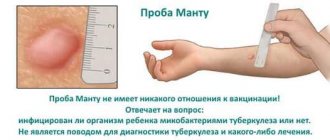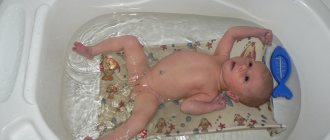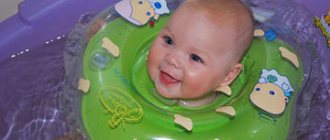I was sure that rocking a child to sleep was harmful. But neurologists convinced me otherwise...
When I was planning to become a mother, I was firmly convinced that motion sickness was harmful. First of all, this was influenced by my friends, who rocked a child on a fitball for an hour
- I never wanted to repeat their “fate.” Then I subscribed to sleep specialist blogs, where it was strictly forbidden to push a sleeping baby in a stroller or rock him to sleep. The instructions were as follows: hold it in your arms for a little while, then put it in the bed.
And you know, the recommendations really worked. True, sometimes I still rocked the baby in my arms, without this I felt like a robot. And the baby, of course, calmed down faster. The main thing is that it hasn’t turned into a bad habit. Only later did I find out that I was lucky - and the child was born with a strong nervous system - that is, he did not have any complications. But if these complications existed, none of the advice from those who oppose motion sickness would have worked. And in the book by a speech therapist and neurologist, “Pedagogy that Changes the Brain,” I found sound arguments in favor of motion sickness.
I recommend that you familiarize yourself with them. Since sometimes it is motion sickness that helps the baby’s nervous system mature.
There are two sides that usually argue. Both sides agree that the child is born with an imperfect vestibular system. And this system is important for the further development of man. What conclusions can be drawn from this?
- The child needs to be rocked to sleep, this stimulates the development of the vestibular system. This is the opinion of motion sickness supporters.
- The child should not be rocked to sleep. This interferes with the development of the vestibular system. Opponents think so.
Proponents of motion sickness say that the baby is accustomed to such stimulation during its intrauterine life. While still living in his mother’s stomach, surrounded by amniotic fluid, the baby calmed down when his mother moved. This is probably why in all cultures there were and still are cradles or cradles in which you can rock a newborn baby. There is another argument - almost all children like swings and carousels, even those who are sick in the car.
Now let's look at the arguments against motion sickness.
- The child calms down when rocked, because he becomes ill and falls into a semi-fainting state.
- If you rock a child, he will be spoiled and will not allow his mother to live in peace.
- Motion sickness can cause cervical syndrome, which can cause the child to die.
A child's first way of communicating is crying. If something bothers a child, he immediately reports it by screaming. Therefore, if motion sickness brought discomfort to the baby, he would continue to scream.
Can you spoil your baby with attention? Most likely no. After all, a healthy child himself gives up motion sickness by about one year. If a baby by this age cannot fall asleep on his own and screams before going to sleep, this may be a signal that there are neurological problems. The child screams not out of harm, but because he feels bad. And now it’s worth figuring out why he feels bad, what’s wrong? If motion sickness helps in this case, it is possible that the baby's vestibular system still needs this stimulation. With the help of motion sickness, the development of the cerebellum is stimulated, and this has a beneficial effect on the development of the entire brain.
Now about cervical syndrome. In fact, this is not motion sickness, but a broken neck, which occurs when the child is shaken with violent force. That is, motion sickness has nothing to do with shaking.
Rocking is a smooth, rhythmic movement. They are beneficial for the child because they help the vestibular apparatus and cerebellum mature and develop the rhythmic system, which is very important for further learning.
When rocking a child, you need to observe how he reacts to it. Therefore, the option of putting the child in a crib with a special rocking device and going away to watch TV is not the best. After all, motion sickness is not a mechanical process. The most important thing here is communication between mother and baby.
It is best if the rocking movements are accompanied by mother's singing. The baby responds to the sound of the mother's voice, rhythm and affectionate intonations. It is this kind of motion sickness that is very useful and important for the entire future development of the child.
Source
Arguments against
There are no supporters of orthodox medicine who forbid parents to rock their child to sleep, believing that it is harmful. However, for some reason, most mothers and fathers adhere to the common misconception that it is impossible to rock a baby for several reasons:
- there is an unsubstantiated opinion that children who were rocked in childhood are prone to alcoholism, drug addiction and generally inappropriate behavior and worldview;
- grandparents know from their own experience that it is difficult to teach a child accustomed to motion sickness to fall asleep on his own;
- some scare the child with a serious health disorder as a result of motion sickness, being convinced that motion sickness actually makes him fall asleep, but faints.
Dr. Komarovsky says that motion sickness is not harmful for the child, but it is harmful for the family, as it takes time away from parents from other matters.
How to rock a baby correctly: 3 ways to rock in your arms and 9 useful devices
The question of how to put a child to sleep arises before new mothers only after returning from the maternity hospital. After all, initially every parent expects that the newborn will sleep peacefully in a crib specially purchased for him.
On the subject: How to pump up your legs for punching power
Indeed, some parents are lucky - their babies fall asleep almost instantly without additional tricks. However, many babies do not want to go to sleep, and mothers have other worries besides spending a long time at the baby's cradle.
Rocking a baby is a fairly effective way of putting children into bed, known since ancient times. However, some modern scientists are convinced that this method can harm the child’s body. Is it so? And how to rock a baby correctly? Let's talk about this further.
Is it possible to put a child to sleep without motion sickness?
Pediatricians suggest replacing motion sickness with unique rituals before bed. They should be repeated every evening before putting the baby to bed. The main thing is to adhere to the schedule and uniformity of the manipulations. Thanks to the emergence of a reflex connection between procedures and sleep, the child will react calmer to being put to bed.
There can be a lot of treatment options: from bathing and light massage to a bedtime story and a lullaby. You can prepare a glass of warm milk for your child or stroke him before bed, put his favorite soft toy with him. A mother's imagination can be limitless.
It is important that such rituals should begin when the child is between one and six months old. Rituals should not excite the child, but rather calm them down. The tale should be told quietly and monotonously; it is also better to perform a lullaby or talk to the child. Think through the procedures in such a way that they do not burden you, mothers. After all, you will have to repeat them for more than one month.
Is it necessary to calm a child with motion sickness?
Sleep is a natural need of the human body. Night rest is especially important for children, since during their waking hours they receive a lot of new information, as a result of which their psyche can be “overloaded.”
During daytime and nighttime rest, the brain processes the information received and rests. The strength and functions of all other organs and systems are also restored. If the child does not get enough sleep, he will be lethargic, irritable and capricious.
Thus, putting the baby to sleep is the most important process that has a direct impact on child development. But the need for sleep is obvious to the mother, but newborn children may react differently to the importance of this phenomenon. Some people fall asleep instantly at night, while others are capricious, cry, and lie in bed for a long time with their eyes open.
In this case, many mothers resort to the old proven method of putting the child to sleep - motion sickness. It allows you to quickly put the newborn to bed and rest yourself. In addition, being in the mother's arms allows the baby to feel completely safe.
But how necessary is motion sickness? The question is ambiguous, because if the child calmly falls asleep without monotonous movements, then such actions on the part of the parents are not necessary. It's another matter if the baby cannot fall asleep without rocking. But even in this case, such a habit may have negative aspects.
Pros and cons of motion sickness
A compelling argument from mothers is that motion sickness has a positive effect on the child’s psychological state. It synchronizes the rhythm of work of all the baby’s internal organs, his brain. This is what helps the child fall asleep easily and have a restful sleep. This opinion has not been proven, but is very popular among parents.
This argument is controversial among pediatricians. On the contrary, many of them believe that motion sickness leads to a deterioration in the child’s health. After all, the vestibular apparatus, which has not yet fully formed, cannot protect the baby from dizziness during motion sickness and even from loss of consciousness. Pediatricians went even further in their comments - the habit of dizziness in childhood can lead to addiction to alcohol, smoking and even drug addiction in adulthood.
Pediatricians who vehemently oppose motion sickness in children talk not only about its physical harm to the child’s body, but also insist that in this way the child is able to manipulate his parents. The plane of communication between the child and parents is considered through tactile contact. But if you make it clear to the child that the mother’s manipulations will not work, the whims will subside and pass over time. This opinion was shared by the famous pediatrician B. Spock.
E. Komarovsky also makes accusations against mothers who rock their children to sleep. He says that rocking can calm a child who is sick and therefore crying. In fact, he needs medical help, not motion sickness. Time will help figure this out. At the same time, Dr. Komarovsky is convinced that more than motion sickness, a child needs loving parents and a normal family. They are the ones who contribute to the recovery of a sick baby. A problematic family, on the contrary, can destroy a healthy child.
From childhood, a child should develop healthy habits that will not interfere with his family life. Motion sickness is not a good habit.
Arguments for and against motion sickness
Doctors and psychologists have still not come to a consensus regarding the need to put newborns to sleep by rocking them in their arms. In various sources you can find information that indicates the benefits and harms of this ritual. It is important to consider the arguments on each side.
Benefit
Recently, the first 12 weeks of a child’s life are commonly called the fourth trimester of pregnancy. And this name is quite justified, since a baby who comes into this world after the usual mother’s womb needs to adapt to it.
Experts give other arguments in favor of motion sickness:
- Rocking a baby is a traditional practice that has been used by many mothers for thousands of years. Centuries of experience have not revealed the negative impact of this method of placement on children's health.
- Rocking a child before bed means satisfying his need to be close to his mother, in physical contact. It is extremely important for a newborn baby to smell the mother’s body and milk; this develops basic trust in the world.
- Mothers, rocking their babies, help them distract from the unpleasant sensations caused by colic and teething. That is, euthanasia in this way can be called a kind of natural analgesic.
- Rocking movements help calm a cranky or overexcited child in a short period of time. This often happens if there were active games before falling asleep.
- There is an opinion that uniform motion sickness promotes the development of the children's vestibular apparatus. And this helps children quickly learn to maintain balance, crawl, and then, accordingly, walk.
- Measured movements can calm not only the child, but also the mother. And if a nursing woman is in an optimal psychological state, then feeding and other procedures will take place without much hassle.
Opponents of motion sickness present their own arguments that point to the undoubted harm of this method of putting children to sleep. First of all, researchers indicate that rocking movements prevent full sleep.
As a result, children's sleep can become restless, superficial, and intermittent. Naturally, in this case, the child will not be able to get enough sleep and rest. Why can’t you rock your baby to sleep?
- The vestibular apparatus in newborns is imperfect, so any unwanted interventions can negatively affect children's health. Children experience dizziness and even fainting, which adults mistake for sound sleep;
- If motion sickness has become a habit, then negative consequences arise. The child cannot fall asleep for a long time, sometimes you have to rock the cradle or carry him in your arms for an hour. At the same time, the baby quickly wakes up as soon as he is put into bed;
- Another negative point is that it is extremely difficult to give up motion sickness later on, since the baby refuses to fall asleep without his mother’s many hours of “shaking.” The transition to other laying methods is significantly delayed;
- The child grows up and therefore becomes heavier. If a mother pumps a bottle every evening for 60 minutes, then she faces problems with the spine and pain in her arms. The mother's overwork cannot but affect the baby's well-being.
On the subject: Exercises to enlarge the buttocks without squats
Many children independently outgrow the habit of falling asleep in their mother's arms by the beginning of the second year of life. However, some doctors believe that the child should be placed differently at approximately 3 to 4 months of age.
Go from the inside out
By comparing the argumentation systems of opposing “camps,” oddly enough, one can see clear points of mutual understanding. Modern education systems agree on one thing: it is wise for parents to go “from the inside out”, and not vice versa. That is, do not take templates and ready-made diagrams as a basis, but listen to your unique child and turn on the parental intuition inherent in nature! Glenn Doman wrote about this: “The best part of the program is the one that brings pleasure and joy to both you and your child. Every parent has a favorite system for stimulating their baby’s sense of balance.” Doman talks about similar exercises practiced by parents both in the world's megacities and in the primeval jungle: fathers carefully throw their children up and then confidently catch them, and mothers both rock their children on their laps.
If parental intuition still strongly tells you that rocking is harmful, trust it. After all, you can develop the vestibular apparatus not only at the moment of falling asleep.
If the baby is worried, upset, and turns the bedtime stage into daily torture for parents and himself, maybe it’s worth adopting the gentle techniques of supporters of a different approach?
For example, smoothly and calmly rock him to sleep while sitting on a sports ball, placing the baby on a thick pillow. Mom’s back and arms get less tired, and the abdominal muscles are trained. Or during feeding before going to bed, put a toy to the chest next to the baby. Or maybe leave a mother’s blouse next to a falling asleep baby: the soft texture of the fabric and the familiar smell will soothe the baby. For some, the dim light of a night light and, for example, the sound of air bubbles emanating from an artificial aquarium help. Other mothers willingly turn on barely audible calm music (and do not recommend listening to it at other times!).
A child’s ability to fall asleep quickly or with difficulty is largely determined by his individuality and the course of life cycles inherent only to him. It is pointless and dangerous to force this pace. Every day a baby lives is hard work. And sleep for a baby is generally in the realm of the incomprehensible and a priori scary. Where does he go? Where does it all go? Why is separation from mom necessary? Smooth, graceful rocking movements seem to return him to the familiar world of symbiotic unity with his mother, to the utmost protection from troubles and sorrows. Let's not blame him for this desire. Walking the fine line between supporting a child and becoming independent is not an easy task.
Remember our mothers. Many of them at one time came to terms with the fact that if they carry us in their arms, they will do this until old age, that we will never go to school or work, we will not get married, because we will not refuse motion sickness, we will not want eat solid food and don’t learn to ask to go potty. But we managed it, which means our kids can handle it too!
Why do you have problems falling asleep?
The opinion that every child necessarily needs rocking to fall asleep is wrong. If the child is absolutely healthy, he is not teething, he is not hungry or wet, then the mother will be able to put him to bed quickly and without any problems.
And yet, it is possible to identify some circumstances that prevent you from falling asleep on your own. Dr. Komarovsky names several such factors:
- Disrupted daily routine. If parents have not developed a daily routine or taken care of discipline, then the child will fall asleep at different times. A baby who is accustomed to a certain routine falls asleep without problems.
- Little activity. A awake child must actively explore the surrounding reality. He needs to be encouraged in every possible way to move, crawl, and roll over. A slightly tired (but not overtired) baby will fall asleep quickly and sleep soundly.
- Incorrect feeding. Malfunctions in the digestive system force the baby to wake up at night. A woman needs to monitor her own diet, excluding the consumption of harmful foods. The same care must be taken when introducing complementary foods.
- Uncomfortable conditions. The inability to put a baby to sleep may be due to an uncomfortable diaper, a wet diaper, loud noises, excessively bright light or a stuffy room. It is important to follow all the rules of healthy sleep.
In addition, as we have already said, a child who is in his mother’s arms feels completely safe. The hug is a kind of reminder of those glory days when he was in his mother's belly.
Thus, one should not go to extremes - rocking the baby for several hours or even ignoring the natural children's desire to receive mother's love and affection.
How to rock a baby in your arms?
If the mother answered positively to the question whether it is possible to rock the baby to sleep, then now it is important to observe the basic conditions for proper rocking. First of all, you should not rock your baby up and down or at a very fast pace.
Failure to comply with safety precautions can end very badly: increased intracranial pressure or even rupture of brain vessels. It is necessary to rock the child slowly, smoothly, from side to side, avoiding swinging.
How to rock a baby in your arms correctly? will help answer this question :
- cradle. Take the baby in your arms, place him on your forearm, while the baby's neck should be above the elbow. Turn the baby's stomach towards you and support his butt with your other hand. Hold the baby a little closer to you and gently rock, turning left and right. The second option is to just walk around the apartment;
- back to yourself. Place your baby's stomach on your forearm so that the cheek is located in the crook of your elbow. Turn the baby's back to you, pass your other hand between your legs and press your open palm against the baby's tummy. This position is especially useful during the period of intestinal colic;
- lying down. What to do if a parent is tired of standing and walking with a child in his arms? You can rock the baby to sleep in a lying position. Place your baby's tummy on your body and then start rocking from side to side.
Motion sickness using devices
If a mother is tired of rocking her baby in her arms, then you can purchase one of the many devices to carry out this process. Stores offer a wide selection of similar devices: cribs, strollers, rocking chairs and other “miracles of technology.” Let's talk about them in more detail.
Rocking center
A similar device is a hanging cradle, which is distinguished by the presence of many settings.
Mom can adjust the back angle, rocking mode, and music that will entertain the small child. Additionally, the child is secured using safety straps.
Why is such a product needed? With its help, parents will be able to take a break from motion sickness and spend a few minutes on household chores or personal matters. It is only important to choose a device suitable for newborn babies.
The center has many advantages. The only disadvantage of such a rocking device is its high cost.
Chaise lounge chair
This device is not as expensive as a motion sickness center. However, its functionality is somewhat limited. The lounge chair is equipped with vibration, music and hanging toys.
This product is usually used from birth to 9 months of age. To make it comfortable for the newborn to lie down, a special anatomical insert is placed in the chaise lounge.
On topic: Gymnastics complex for leg joints
Swing chair
Such devices are also called rockers. They work thanks to rounded metal runners on which the baby cradle is installed. The swing is set in motion by the baby's movements or the efforts of an adult.
You can block the movements of the swing using special legs located in front and behind. Such devices are equipped with various functions: vibration, arc toys, music, light effects.
Car seat category “0+”
You can rock a newborn to sleep using a car carrier, although this holding device is intended primarily for transporting babies in a car.
High-quality baby carrier models have a rocking function due to the rounded base.
That is why many mothers adapt such devices for rocking their baby, although they will have to make some effort.
In general, it is enough for a mother to simply rock the chair with one hand, and at the same time she can read a book, listen to her favorite music or enjoy a tasty drink.
Stroller
Despite the fact that not all experts have a positive attitude towards the idea of rocking a child to sleep in strollers, babies usually fall asleep very well in these vehicles.
Fresh air and gentle movement help you sleep quickly and soundly. It makes no sense to talk in detail about this device, but it is important to clarify that not all strollers have a motion sickness function. It is worth choosing bassinets designed specifically for newborns.
Sling
A fabric baby carrier is an excellent option for rocking a baby to sleep without interrupting important work. This device provides uniform support for all parts of the spinal column and the child’s head, involves close contact between the baby and the mother, and also frees up the hands.
The only drawback is that the mother needs to get used to wearing a sling and the weight of a baby. In addition, it is necessary to choose the optimal device for a newborn baby, since not all headbands are suitable for the smallest children.
Ergo backpack
Another version of a sling, only it resembles a backpack rather than a bandage. This device is used for carrying and rocking babies who can already hold their head and sit quite confidently.
Fitball
A large inflatable ball is a great helper for the whole family, as it allows you to do fitness, do exercises with your baby and rock the little person to sleep.
There are 2 main ways to rock a child on an inflatable ball:
- The mother sits on the ball, takes the child in her arms, and slowly jumps on the fitball.
- A small blanket or diaper is placed on the ball, and only then the child is placed on the device. The fitball is smoothly swung from side to side.
Hammock
Hanging net is a great outdoor accessory. However, some mothers successfully use a hammock to rock their baby to sleep. Naturally, one child cannot be placed on it. First, the mother lies down in the net, and only then puts the baby on top of her.
To avoid injury, you need to pay attention to the fastening of the suspension device. Also, we must not forget about the soft mat, which is placed directly under the hammock.










